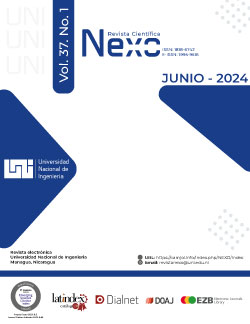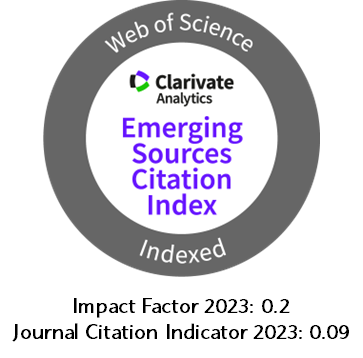Analysis of dry matter and bromatological compounds of fruit and vegetable products from western Honduras
DOI:
https://doi.org/10.5377/nrc.v37i01.18323Keywords:
Horticulture, Dry Matter, Specific Heat, Thermal Conductivity, Bromatological AnalysisAbstract
This work focuses on the evaluation of the performance of 23 fruit and vegetable products from the Western Region of Honduras, dry matter and moisture content in the raw materials were determined in a sample of 100 (g) of fresh fruit, in the same way it was determined by bromatological analysis, in a dry matter sample of 100 (g). The percentage of participation of protein, carbohydrates, etheric or lipid extract, fiber and ash of each product studied was established, it was evaluated by preparing two replications of each sample and/or treatment, at 105 degrees Celsius and time between six (6 hr) and (12 hr), designing the relative predictive potential of an exponential model, is denoted, R² equal to or greater if its significance level is 0.05, the corresponding confidence level greater than 0.95 confidence level, obtaining the following result.
The scientific onion name (Allium cepa) yellow variety or Vidalia, R² = 0.9848, prediction potential of an exponential model is denoted R² the closer to 1 is better is the exponential equation model, shelled potato (Solanum tuberosum), prediction potential R² = 0.9865, tender green mango (Mangifera indica), R² = 0.9734, strawberry (Fragaria × ananassa), R² = 0.9785, potato with skin (Solanum tuberosum), R² = 0.9616, Tomato (Solanum lycopersicum), Cherokee variety, R² = 0.964, Carrot with skin (Daucus carota), R² = 0.9621, Chile (Capsicum annuum), Jalapeño variety, R² = 0.9674, Pineapple with skin (Ananas comosus), sugar variety, R² = 0.9548, Melon with skin (Cucumis melo), cantaloupe variety, R² = 0.9548; Confidence interval at 95%, protocols should be improved, to achieve efficiency in the prediction of imported green apple (Granny Smith), the relative predictive power of an exponential model is denoted by R² = 0.9409, chayote (Sechium edule), R² = 0.9167, green bell pepper (Capsicum annuum), statistical prediction of R² = 0.9058, Avocado (Persea Americana) Hass variety, R² = 0.9135, Watermelon (Citrullus lanatus), R² = 0.9406.
In the following samples of the trial much more research is needed, since the relative predictive potential of an exponential model is below 90%, it is best to do more repetitions in new research to optimize the prediction model of the exponential curve, Rambutan pulp (Nephelium lappaceum), prediction potential of R² = 0.6879, pineapple pulp (Ananas comosus), sugar variety, R² = 0.8332, rambutan with shell (Nephelium lappaceum), R² = 0.8002, this probably due to the fact that the sample weight times were not efficient, oven temperature not homogeneous, samples closer to the resistance of the oven experience greater moisture loss, so the appropriate protocols must be established to achieve an experiment with a higher level of confidence, for samples below 95%.
With the estimation of thermal variables such as specific heat and thermal conductivity we find that there is a direct relationship with the water content of the raw material, in the same way there is no relationship with the percentage of dry matter of these raw materials, which are a contribution to be used as primary data in thermodynamic analyses when these agricultural raw materials are transformed.
Downloads
528
References
Alvis, A. C. (2012). Determinación de Propiedades Termofísicas de Alimentos en Función de la Concentración y la Temperatura empleando un Programa Computacional. Información tecnológica(23), 111-116.
Alvis, A. I. (2009). Determinación del coeficiente de transferencia de calor a través de una aplicación de computadoras. Información Tecnológica, 21(13-20).
Alzamora, S. M., Guerrero, S. N., Nieto, A. B., & Vidales, S. L. (2004). Conservación de frutas y hortalizas, mediante tecnicas combinadas. FAO , Organización de las Naciones Unidas, para la agricultura y la alimentación . Roma: Danilo J. Mejía L. (Ph.D), Oficial, AGST.
Armando, G. A., & Arrázola Guillermo, A. (2015). Efecto del Recubrimiento Comestible en las Propiedades de Trozos de Batata (Ipomoea Batatas Lam) Fritos por Inmersión Parte 2: Propiedades Termofísicas y de Transporte. Información tecnológica, 26(1), 103-116.
Astudillo, C. E., Fonseca, & Rodríguez, P. E. (2009). Protocolo para la determinación de materia seca de frutos de aguacate (Persea americana Mill. cv. Hass) con horno microondas. AGROSAVIA, Corporación Colombiana de Investigación. vía a Las Palmas, vereda Llano Grande, Antioquia, Colombia: Catalogación en la publicación – Biblioteca Agropecuaria de Colombia.
Escobar, J. V., Rodriguez, P., Cortes, M., & Correa, G. (2019). Influencia de la Materia Seca como Índice de Madurez de Cosecha y Tiempo de Almacenamiento en Frío sobre la Calidad del Aguacate cv. Hass Producido en la Región del Trópico Alto. Información tecnológica, 30(3).
Fernández, N. (7 de Marzo de 2019). Honduras se alimenta (Mango Verde). HONDURASSEALIMENTA:
García, J. A., Figueroa, J. D., González, J. A., Toivonen, Albert, P. M., García, S. S., & Goenaga., R. (noviembre de 2018). Uso de un espectrómetro portátil para determinar materia seca de manera no destructiva. Centro de Investigación Regional Pacífico Centre de campo Experimental Santiago Ixcuintla.
Guanajuato, U. d. (2022). Procesamiento y conservación de alimentos por la refrigeración. Universidad de Guanajuato, Contenidos didácticos de experiencias de aprendizaje . Nueva Zona UG: Carretera a Dolores Hidalgo, Guanajuato, km 2.5, San Javier, C.P. 36020. Guanajuato, Gto., México.: Recursos Educativos Abiertos.
Mejía, J. A. (2011). Estudio del efecto de las Altas Presiones Hidrostáticas en la conservación de la fruta de Mango (Mangifera indica).
Mejía, J. A., & Mejía, F. T. (2023). Características que influyen en la comercialización y consumo del vino de fruta, en el Occidente de Honduras. Ciencia Latina Revista Científica Multidisciplinar, 7 (1), 10991-11011.
Mejía, J. A., Romero, E. A., & Barahona., M. M. (18 de Mayo de 2018). Efecto bactericida del clavo de olor, canela y benzoato de sodio en la conservación del mango haden y melón. (U. Dirección de Investigación Científica y Posgrado, Ed.) Revista Ciencia y Tecnología, 152 -174.
Newsletter. (8 de Abril de 2023). La Materia Seca como herramienta de medida de la madurez en la fruta. Frutas y hortalizas frescas 5 al dia.
Plinio, V. Z., & Arteaga-Solórzano, R. A.-G.-V. (2020). Estimación de propiedades termofísicas de un producto cárnico. Tecnología Química, 40(134-149). Retrieved 2023 de 05 de 01.
R Paul Singh, D. H. (2001). Introducción a la Ingenieira de alimentos. Zaragoza., España: Academic Press. Retrieved 30 de abril de 2023.
Reinosso Ortíz, C. S. (2006). Cálculo y manejo en pastoreo controlado, Pastoreo por horas. Determinación de la disponibilidad y crecimiento de la pastura. (Veterinaria, Ed.) Dialnet, Vol. 41, Nº. 161-162, págs. 25-30.
Southgate, H. G. (2006). Datos de composición de alimentos. (O. d. Alimentación., Ed.) Roma: B.A. Burlingame y U.R. Charrondiere.
Tirado, D. F., Montero, P. M., & Acevedo, D. (2015). Estudio Comparativo de Métodos Empleados para la Determinación de Humedad de Varias Matrices Alimentarias. Información tecnológica, 26(02), 03-10.
Waissbluth, R. &. (2007). Determinación del porcentaje mínimo de materia seca para autorizar la cosecha de paltas cv. Hass para ser exportadas. Documento presentado en el VI Congreso Mundial del Aguacate.
Downloads
Published
How to Cite
Issue
Section
License

This work is licensed under a Creative Commons Attribution-NonCommercial-NoDerivatives 4.0 International License.
The authors who publish in Nexo Scientific Journal agree to the following terms:
- Authors retain the copyright and grant the journal the right of the first publication under the license Creative Commons Attribution License, which allows others to share the work with a recognition of the authorship of the work and the initial publication in Nexo Scientific Journal.
- Authors may separately establish additional agreements for the non-exclusive distribution of the version of the work published in the journal (for example, in an institutional repository or a book), with the recognition of the initial publication in Nexo Scientific Journal.
- Authors are allowed and encouraged to disseminate their works electronically (for example, in institutional repositories or in their own website) before and during the submission process, as it can lead to productive exchanges, as well as earlier and greater citation of published works.











